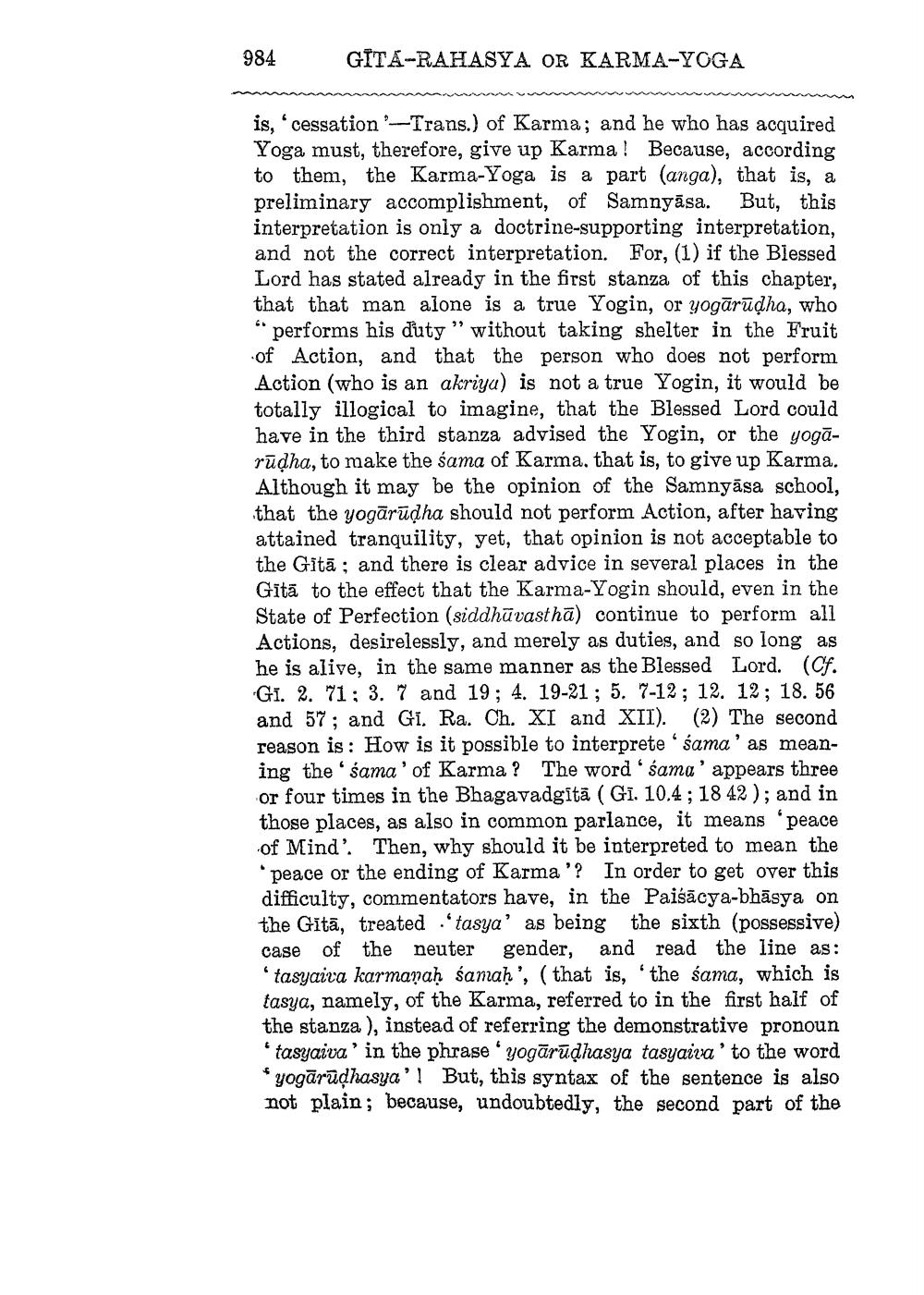________________
984
GITA-RAHASYA OR KARMA-YOGA
is, cessation --Trans.) of Karma; and he who has acquired Yoga must, therefore, give up Karma! Because, according to them, the Karma-Yoga is a part (anga), that is, a preliminary accomplishment, of Samnyāsa. But, this interpretation is only a doctrine-supporting interpretation, and not the correct interpretation. For, (1) if the Blessed Lord has stated already in the first stanza of this chapter, that that man alone is a true Yogin, or yogārūdha, who * performs his duty” without taking shelter in the Fruit of Action, and that the person who does not perform Action (who is an akriya) is not a true Yogin, it would be totally illogical to imagine, that the Blessed Lord could have in the third stanza advised the Yogin, or the yogārūdha, to make the sama of Karma, that is, to give up Karma. Although it may be the opinion of the Samnyāsa school, that the yogārūdha should not perform Action, after having attained tranquility, yet, that opinion is not acceptable to the Gītā; and there is clear advice in several places in the Gītā to the effect that the Karma-Yogin should, even in the State of Perfection (siddhūvasthā) continue to perform all Actions, desirelessly, and merely as duties, and so long as he is alive, in the same manner as the Blessed Lord. (Cf. GI. 2. 71 ; 3.7 and 19; 4. 19-21 ; 5. 7-12; 12. 12; 18. 56 and 57; and Gi. Ra. Ch. XI and XII). (2) The second reason is : How is it possible to interprete 'sama' as meaning the 'sama' of Karma? The word ' sama' appears three or four times in the Bhagavadgitā (Gi. 10.4; 18 42 ); and in those places, as also in common parlance, it means 'peace of Mind'. Then, why should it be interpreted to mean the * peace or the ending of Karma'? In order to get over this difficulty, commentators have, in the Paiśācya-bhāsya on the Gītā, treated tasya' as being the sixth (possessive) case of the neuter gender, and read the line as:
tasyaira karmanaḥ śanaḥ', (that is, the sama, which is tasya, namely, of the Karma, referred to in the first half of the stanza), instead of referring the demonstrative pronoun * tasyaiva ' in the phrase 'yogārūdhasya tasyaiva' to the word * yogārudhasya'! But, this syntax of the sentence is also not plain; because, undoubtedly, the second part of the




